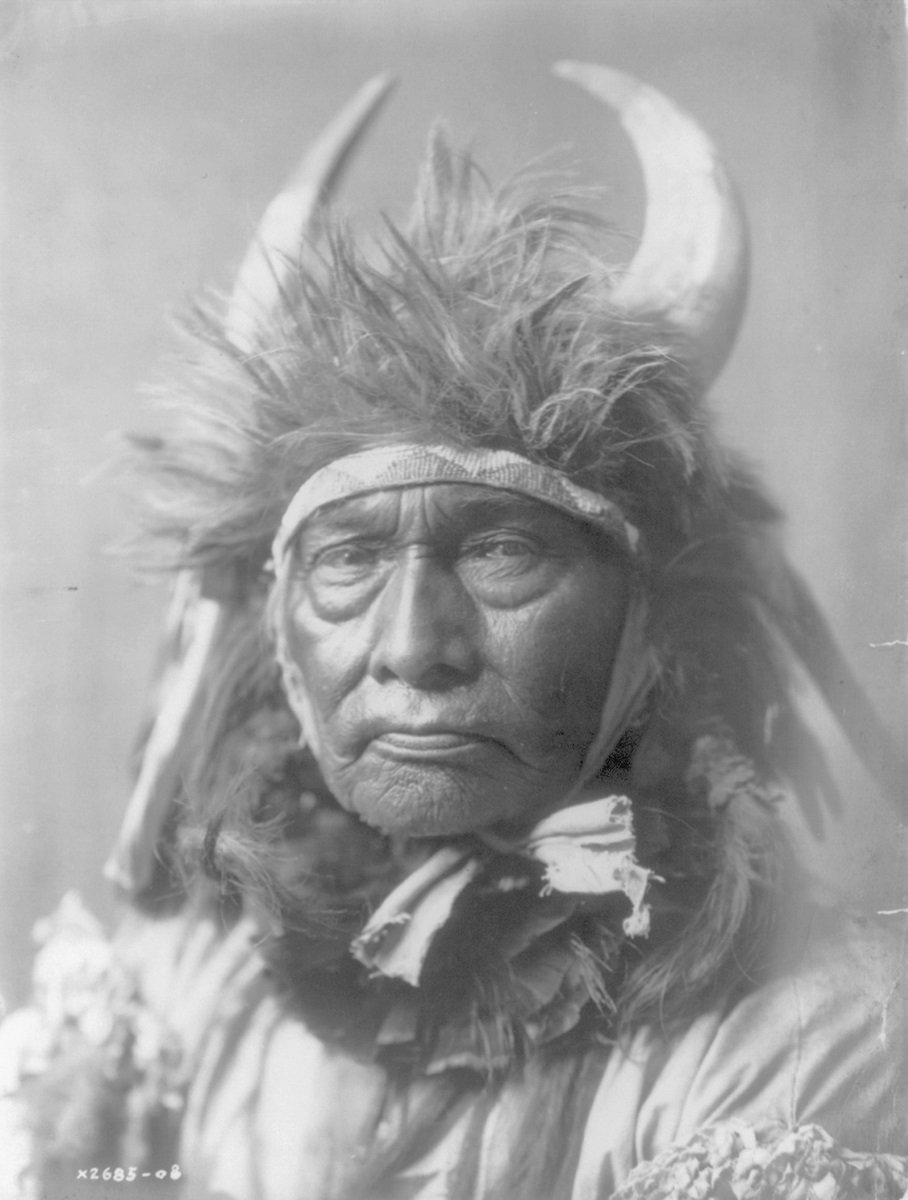Bull Chief, warrior of the Apsáalooke (Crow Tribe), photographed by Edward S. Curtis in the year 1908
Available on my print shop on Redbubble. Licencing questions? Email me!
#20DaysofNativeColors 📸 8/20
This photo marks the eighth in a series of twenty photos I've given color of Indigenous and First Nations people who lived a century ago in America
Photo by Edward S. Curtis (Library of Congress)
Bull Chief was born in 1825, and was part of the Apsáalooke tribe. Apsáalooke, or the People of the Large Beaked Bird, was the name given to them by the Hidatsa, a neighbouring and related Siouan-speaking tribe. French interpreters translated the name as gens du corbeau ("people of the crow"), and they became known in English as the Crow.
They occupied the area around the Yellowstone River and its tributaries, particularly the valleys of the Powder, Wind, and Bighorn rivers in what is now Montana. During their history, the Crow have changed their territory many times because of conflicts with the Ojibwe, Cree, Cheyennes, and Lakota (Sioux) peoples.
A basic element in traditional Crow religious life was the “vision quest” – a rite of passage. Through a process involving prayer, solemn vows, fasting alone at a sacred site, and, sometimes, piercing the body, a man who attained a vision was “adopted” by a supernatural guardian.
In 1908 Bull Chief met Edward S. Curtis who had his picture taken, and also gave him a lengthy interview. I will share portions of it:
Believing he could ‘count coupe’ (receive highest honor for winning intertribal wars between other Plains Indians), Bull Chief opted to never fast, and always returned home without honor. After being unsuccessful for so long, he then tried to fast multiple times in hopes of receiving spiritual visions. In one attempt he climbed up on Clouds Peak, the highest peak in the Bighorn Mountains of Wyoming, and fasted for a day and a night. Still no vision. For another attempt, he fasted at the head of Red Lodge Creek, Montana, for another four days and nights in a blinding snow blizzard. This time he had his first vision where he “Saw his own lodge and a splendid bay horse standing in front of it”. This vision was soon followed by his first captured horse and Bull Chief started 'counting coupe' frequently.
Not long after his marriage, a bank of earth fell on his wife and killed her; and although he was looked upon with favor by all the tribe, and many women were hoping to be chosen by him, he sorrowed for the dead girl and was determined to go through a form of torture.
Two of his friends killed an old bison bull and dragged the head with a strip of skin and its tail intact to the village. Bull Chief bathed and had a clansman named Big Shadow pierce him through the shoulders, and he hung the bison head, a shield and a tomahawk by leather strips fastened through the holes of his skin.
At sunset he went to a hilltop to which Big Shadow had directed him, and lay down with his head between the horns of the bison head and his feet at the tail, pointing eastward. In the night he had a vision, of a man standing by his feet, then turning and departing. When Bull Chief told Big Shadow about his vision, the latter believed this man in his vision to be his father, Morning Star. From that day forward, Bull Chief dressed as this spirit had been dressed, believing that all his honors and long life were the result of its guidance and protection.
Three of his first coups were against the Sioux, one of the enemies of the Apsáalooke tribe, and two of his first coups were on Indians killed by white men, but these coups according to Bull Chief were, "Not good." Bull Chief recounted memories of how he captured guns three times from enemies who were "Alive and shooting at him”. He remembered taking two revolvers and a bow from a Sioux Indian and also capturing two tethered horses.
Bull Chief never led any war-parties out of camp, but on four occasions he did take detachment parties trying to return home, and with them always returned home with undisputed honor. On three separate occasions Bull Chief dismounted his horse during battle and single-handedly managed to hold the opposing company back. During his lifetime, up until he had his interview with Edward S. Curtis, Bull Chief killed three Sioux, two Nez Percés, one Shoshoni, and two Piegan. He was a member of Never Shoots, Packs Game clan, and Fox organization. Although Bull Chief decided to never accept the lance of the Fox organization, they had him as the head of their processional four times, showing he was the bravest man present.
He married fifteen times, and gave up thirteen of his wives. He was a father of fifteen children.
How much of this interview is true, been mistranslated or romanticised is uncertain, but I wanted to share it with you as it was recounted in Edward S. Curtis’ “The North American Indian”.
Map of the Tirbal Territories in Montana. Bull Chief was part of the Crow Reservation which lies on the southern border of the state.
Map via Montana State University
Cloud Peak, the first peak Bull Chief climbed and fasted a day and a night.
Photo by Roaldsstadir (Wikimedia Commons)
The rolling plains of Crow Indian Reservation, Big Horn County, Montana. View from the Interstate 90 in the Crow Agency/Lodge Grass area.
Photo by Montanabw (Wikimedia Commons)
Available on my print shop on Redbubble. Licencing questions? Email me!





